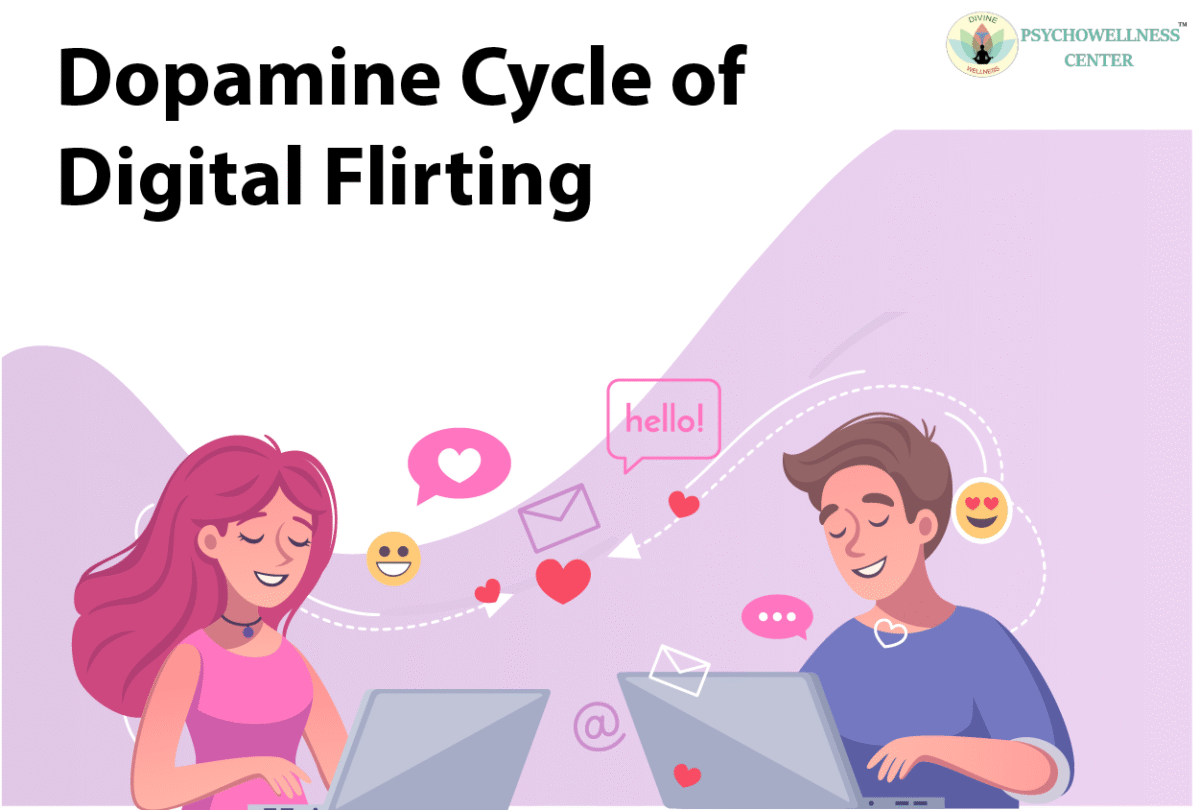In the age of smartphones, online dating, and instant messaging, the way we flirt has fundamentally transformed. No longer confined to in-person encounters, late-night phone calls, or handwritten notes, modern flirting now lives in the rapid exchange of texts, emojis, likes, and swipes. With just a few taps on a screen, we can spark a connection, initiate romance, or maintain playful banter. But behind the thrill of receiving a message from someone we’re attracted to lies a powerful neurochemical: dopamine. This “feel-good” neurotransmitter feeds our enthusiasm, keeps us hooked, and is fundamental to how we perceive digital attraction and validation.
Understanding the dopamine cycle of digital flirting can help explain why we’re drawn to these interactions and why they can be so addictive, especially when loneliness, anxiety, or dating concerns creep in.
What Is Dopamine?
Dopamine is a powerful chemical messenger in the brain that plays a vital role in how we experience pleasure, reward, and motivation. Often referred to as the “feel-good” neurotransmitter, dopamine is released when we engage in activities that bring us joy or excitement whether it’s eating a delicious piece of chocolate, achieving a goal, winning a game, or receiving a romantic text message. The expectation of reward, rather than the experience itself, stimulates dopamine. This anticipation is what drives many of our behaviours and can explain why certain habits, like digital flirting, become so compelling and addictive.
Dopamine, unlike serotonin, is concerned with anticipation rather than satisfaction. It’s the reason we keep checking our phones after sending a flirty message, hoping for a reply. It’s not the message itself, but the possibility of reward that keeps us hooked, especially in moments when we feel disconnected or alone in our relationship.
The Digital Flirting Feedback Loop
Digital flirting connects to our brain’s system of reward. Here’s how the cycle typically works:
- Anticipation: You send a flirty text, meme, or emoji.
- Uncertainty: You wait. Will they reply? Will they flirt back?
- Reward: You get a notification they responded, maybe with affection, enthusiasm, or a heart emoji.
- Dopamine Rush: Your brain releases dopamine, reinforcing the behaviour.
- Repetition: You want that feeling again, so you send another message.
This loop is especially powerful because of the intermittent and unpredictable nature of digital communication. Sometimes replies are instant, sometimes they take hours this uncertainty keeps the dopamine system highly activated, much like a slot machine (Alter, 2017).
Why It’s So Addictive
The combination of novelty, anticipation, and social reward creates a dopamine cocktail that’s hard to resist. Tinder, Instagram, and WhatsApp are all meant to keep us engaged using this identical approach. You match with someone new, receive a compliment, or get a “like” on your story, and your brain rewards you with a small hit of dopamine.
Digital flirting becomes addictive not just because it feels good, but because it’s easy. You can engage in it at any time, from anywhere, and with multiple people at once. Unlike face-to-face flirting, it’s low risk and highly curated, allowing you to present your best self while avoiding immediate rejection, even if you’re navigating a breakup, a toxic relationship, or lingering depression.
The Emotional Costs
While digital flirting can be fun and affirming, it also has downsides. The dopamine cycle can create emotional dependency, where individuals begin to rely on digital validation for self-worth. This can lead to stress, anxiety, and reduced satisfaction in real-life connections and intimacy.
If someone starts equating their attractiveness or likability with how many people respond to their messages or swipe right, it can distort their sense of self. And if the dopamine rush is tied only to new or virtual interactions, sustaining long-term emotional relationships may become harder.
It can also lead to “breadcrumbing” where someone gives just enough attention to keep another person interested, without genuine intent. This often leaves people stuck in a loop of anticipation and disappointment, weakening their capacity for mindful, real-world connection.
Managing the Dopamine Cycle
Understanding that digital flirting can trigger a biochemical reaction helps in managing expectations and setting healthier boundaries. Here are a few tips:
- Pause before engaging: Ask yourself if you’re flirting out of boredom, loneliness, or genuine interest.
- Limit app time: Set boundaries for how long or often you use dating or messaging apps.
- Prioritise offline connection: Balance online interactions with meaningful, in-person experiences.
- Be mindful of patterns: Notice if you’re chasing dopamine rather than authentic intimacy.
If digital flirting starts interfering with your mental health or real-world relationships, it might be time to talk to a professional. Mindfulness therapy, stress counselling, or sessions with licensed therapists can help you explore deeper emotional needs and build healthier relationship habits.
Platforms like TalktoAngel can connect you with the best therapist in Delhi for issues like anxiety, depression, or toxic relationships, all of which are often tied to digital behaviour patterns.
Contributed by Ms. Sangeeta Pal, Counselling Psychologist
This blog was posted on 23 June 2025
References
Alter, A. (2017). Irresistible: The rise of addictive technology and the business of keeping us hooked. Penguin Press.
Montague, P. R., & Berns, G. S. (2002). Neural economics and the biological substrates of valuation. Neuron, 36(2), 265–284. https://doi.org/10.1016/S0896-6273(02)00974-1
Robinson, T. E., & Berridge, K. C. (2003). Addiction. Annual Review of Psychology, 54(1), 25–53. https://doi.org/10.1146/annurev.psych.54.101601.145237

